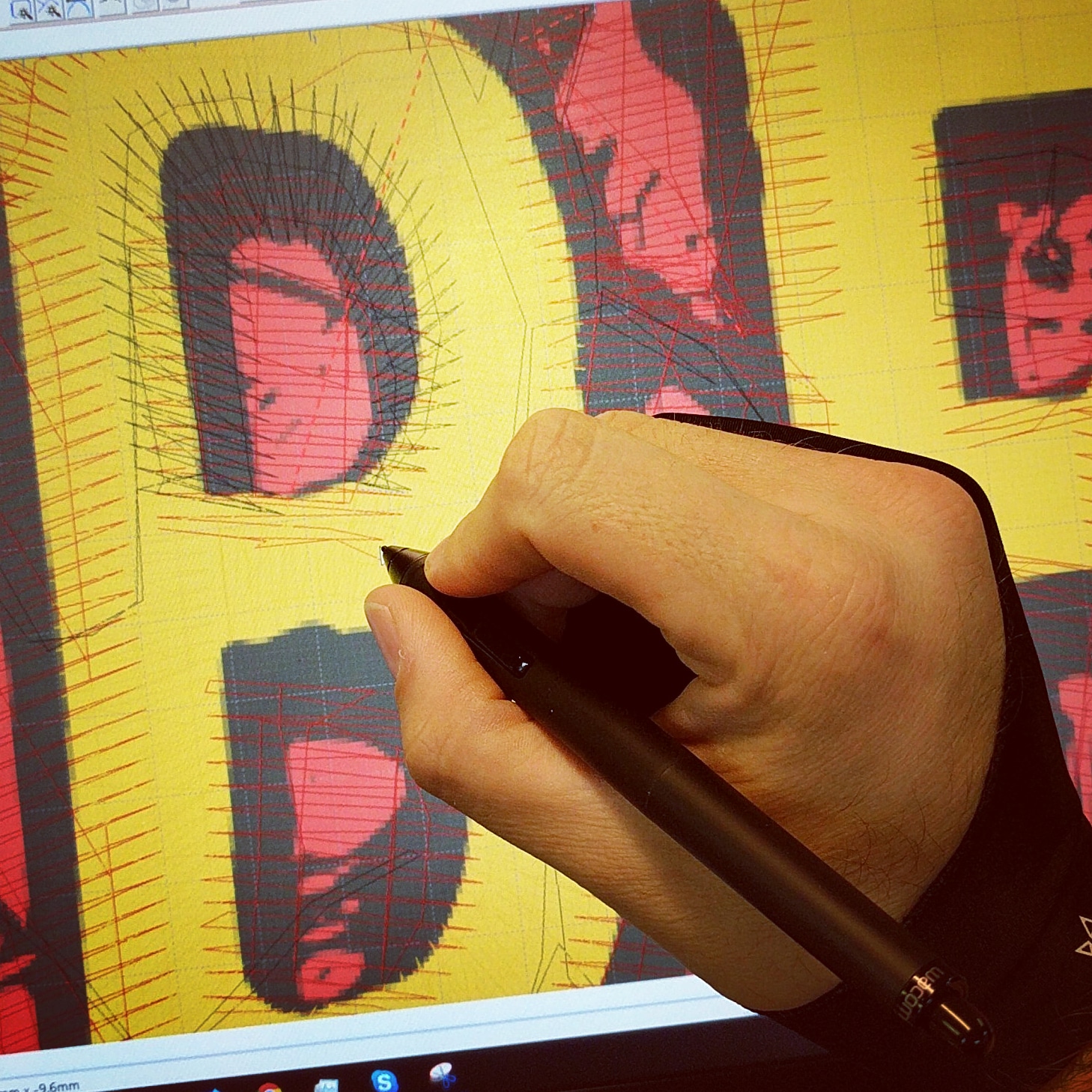Ideal Digitizing for Embroidery: Improve Your Tasks
Ideal Digitizing for Embroidery: Improve Your Tasks
Blog Article
Explore Different Kinds Of Embroidery Digitizing Methods
Needlework digitizing has evolved dramatically over the years, offering a myriad of strategies to bring styles to life in the electronic realm. The world prolongs to much more advanced techniques like photorealistic needlework digitizing and the remarkable realm of 3D needlework digitizing.
Standard Hand Needlework Digitizing
Conventional hand embroidery digitizing involves the procedure of transforming elaborate hand-stitched layouts into digital styles for maker needlework. This strategy requires proficient artisans to carefully analyze the handcrafted style and afterwards use specialized software application to recreate it in an electronic layout. Each stitch, shade, and detail has to be meticulously translated to guarantee that the significance of the original hand needlework is maintained in the digital variation.
One of the crucial obstacles of traditional hand needlework digitizing is recording the ins and outs and subtleties of the handmade layout. Digitizing for Embroidery. Craftsmens must possess a deep understanding of different needlework techniques, such as satin stitch, chain stitch, and French knots, to properly replicate these strategies in the electronic realm. In addition, they need to have a keen eye for information to guarantee that the digital design preserves the exact same degree of creativity and workmanship as the initial hand-stitched piece
Punching Strategy
To seamlessly change from conventional hand needlework digitizing to the boxing technique, artisans have to currently concentrate on transforming the intricate electronic layouts right into instructions that embroidery devices can interpret. The punching strategy includes using specialized software to create digital documents that have commands for the embroidery maker to follow. This procedure requires a deep understanding of not simply the layout itself yet also the capacities and constraints of the embroidery maker.

Auto-Digitizing Software Programs
Embroidery digitizing has been revolutionized by the arrival of auto-digitizing software application, supplying craftsmens with sophisticated devices to transform digital styles into embroidery equipment instructions successfully. Auto-digitizing software application utilize algorithms to evaluate electronic pictures or vector files and produce needlework designs immediately. These programs permit fast and accurate conversion of complex layouts into stitch patterns, saving time and effort for embroiderers.
One of the vital advantages of auto-digitizing software program is its straightforward user interface, making Continue it obtainable to both newbies and experienced digitizers. These programs commonly include attributes such as stitch editing and enhancing tools, thread shade matching, and the capability to sneak peek the last stitched layout. Additionally, auto-digitizing software can take care of complicated styles with several colors and complex details, generating high-quality needlework data suitable for various garments and textile projects.
While auto-digitizing software offers benefit and effectiveness, it is vital for users to understand the restrictions of automated digitizing. Fine-tuning and hands-on modifications might still be needed to achieve the wanted embroidery quality, especially when dealing with intricate or distinct designs. By leveraging the abilities of auto-digitizing software alongside manual digitizing strategies, craftsmens can boost their needlework digitizing process and produce stunning stitched pieces.
Photorealistic Needlework Digitizing
Using innovative digital imaging methods, attaining photorealistic results in embroidery digitizing has ended up being a desired skill amongst modern craftsmens. This technique includes converting high-resolution pictures right into intricate stitch patterns that carefully simulate the initial design, causing needlework items that display realistic information and depth.
To accomplish photorealistic embroidery digitizing, artisans need to possess an eager eye for detail and an extensive understanding of how different stitch types and thickness can impact the last end result. By carefully drawing up each discover this info here color and color in the photo, embroiderers can develop an electronic documents that overviews the needlework machine to duplicate the nuances of the initial image accurately.
Photorealistic needlework digitizing is particularly preferred in developing custom-made layouts for clothing, home decoration, and art pieces where recording the essence of a photo or artwork is vital. This technique permits craftsmens to change memories, landscapes, pictures, and intricate art work into stunning stitched masterpieces that showcase a blend of typical workmanship and sophisticated modern technology.
3D Needlework Digitizing
With the development of electronic imaging methods in accomplishing photorealistic lead to needlework digitizing, the exploration of 'D Needlework Digitizing' uses a new dimension to the ins and outs of design duplication. 'D Embroidery weblink Digitizing' describes the three-dimensional digitizing strategy that adds depth and structure to embroidery designs, producing a more practical and visually appealing last product. This strategy makes use of software application that mimics the impact of light and shadow on the embroidery layout, boosting its total aesthetic effect.
One of the key benefits of 'D Embroidery Digitizing' is its capacity to make layouts look more lifelike and dynamic. By including depth to the embroidery style, the last product appears a lot more reasonable and fascinating (Digitizing for Embroidery). Additionally, this strategy enables more innovative freedom in design execution, allowing embroiderers to explore various appearances and results that were previously testing to achieve
Conclusion

Report this page